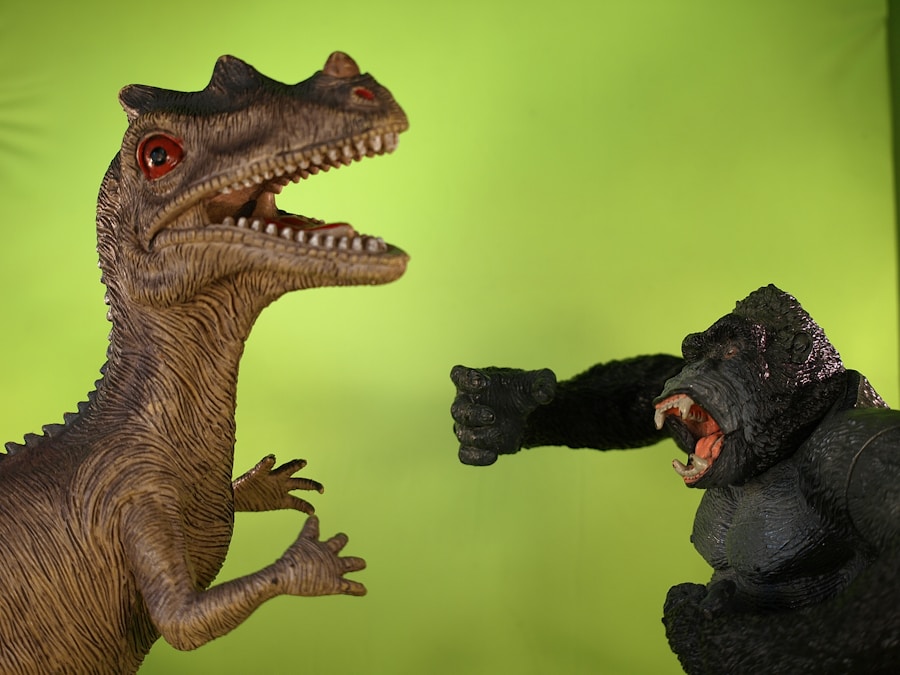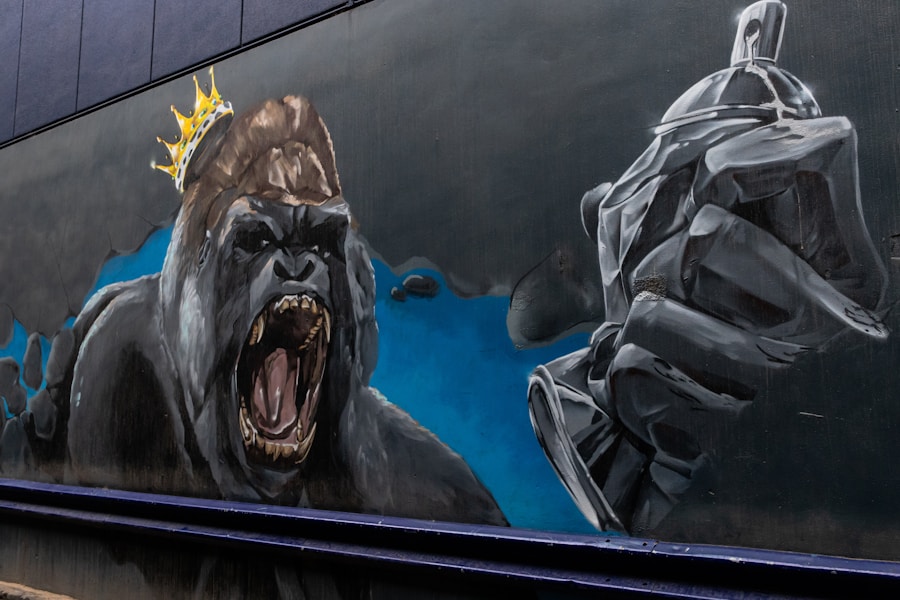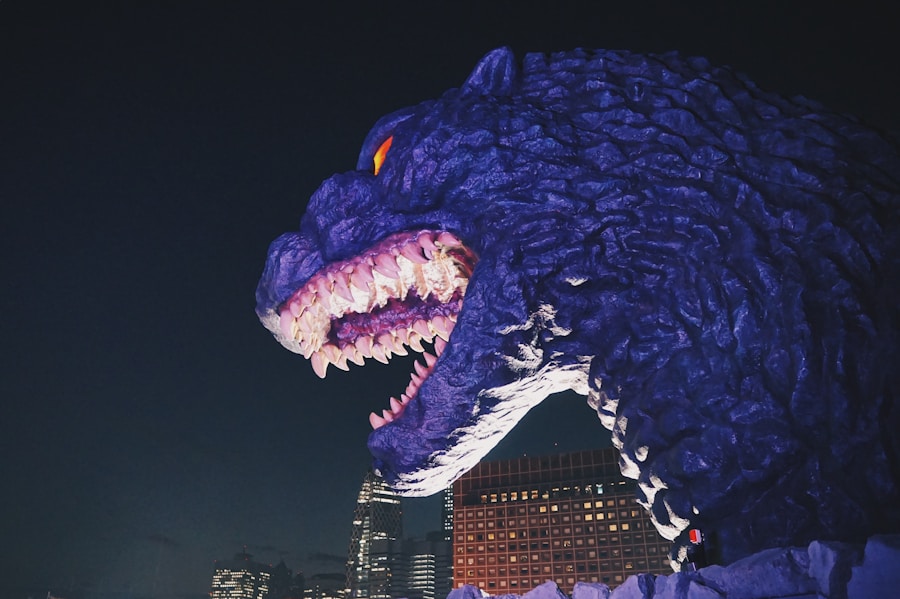When you think about the titanic clash between Godzilla and Kong, it’s easy to imagine the final product—two iconic monsters battling it out in a visually stunning spectacle. However, the journey to that climactic showdown began with early design concepts that laid the groundwork for what would become a cinematic phenomenon. In the initial stages, artists and designers were tasked with capturing the essence of these legendary creatures while also reimagining them for a modern audience.
You can almost feel the excitement in the air as sketches began to take shape, each one a testament to the creative minds behind the project. These early concepts were not just about aesthetics; they were about understanding the characters at their core. Godzilla, with his imposing stature and fearsome presence, needed to embody the raw power of nature itself.
Meanwhile, Kong had to reflect both strength and vulnerability, a creature caught between his primal instincts and a desire for connection. As you delve into these early designs, you can see how artists experimented with various features—scales, fur textures, and even facial expressions—to convey the emotional depth of each character. This foundational work was crucial in setting the tone for the film, ensuring that audiences would not only witness a battle but also connect with the monsters on a deeper level.
Key Takeaways
- Early design concepts for Godzilla x Kong explored various interpretations of the iconic monsters, leading to the creation of a visually stunning film.
- Unseen monster battles were brought to life through concept art, showcasing the epic clashes between Godzilla and Kong in ways that were not seen in the final film.
- The evolution of character designs allowed for a deeper exploration of the personalities and physical attributes of the monsters, adding depth to their on-screen presence.
- Unexplored environments were visualized through concept art, offering a glimpse into the vast and diverse world in which the epic battles took place.
- Unused weapon and power concepts were developed and visualized, showcasing the creative process behind the development of the monsters’ abilities and the weaponry used in the film.
Unseen Monster Battles: Concept Art
Exploring the Art of Combat
You can almost hear the roars and feel the ground shake as you explore these vibrant depictions of combat. In these artworks, artists played with various environments and scenarios, envisioning battles that ranged from urban landscapes to remote islands. Some pieces depict Godzilla unleashing his atomic breath while Kong counters with sheer brute force, creating a visual spectacle that leaves you breathless.
Beyond the Obvious Confrontations
Others explore more nuanced confrontations, where strategy and cunning come into play. These unseen battles not only highlight the artistic vision behind the film but also serve as a reminder of the endless possibilities that exist within the MonsterVerse.
A Glimpse into What Could Have Been
As you immerse yourself in this concept art, you can’t help but wonder how different the film might have been had these scenes made it to the final cut.
The Evolution of Character Designs

Character design is an intricate process that evolves over time, and the journey of Godzilla and Kong is no exception.
Early designs often leaned heavily on traditional interpretations, but as discussions progressed, artists began to infuse modern elements that resonated with contemporary audiences.
For Godzilla, this evolution involved refining his iconic silhouette while adding layers of detail that emphasized his status as a force of nature. You might notice how his scales became more pronounced, giving him a more menacing appearance while still retaining a sense of majesty. On the other hand, Kong’s design journey was equally fascinating.
Artists sought to balance his primal strength with a more relatable demeanor, allowing viewers to empathize with him as he navigated his world. This evolution was not just about aesthetics; it was about crafting characters that would resonate emotionally with audiences, making their eventual confrontation all the more impactful.
Unexplored Environments: Concept Art
The environments in which Godzilla and Kong battle are as crucial as the monsters themselves. Concept art for unexplored environments reveals a rich tapestry of settings that could have served as backdrops for their epic showdown. From sprawling urban landscapes to lush jungles and desolate wastelands, each environment is meticulously crafted to enhance the narrative and visual experience.
As you explore these artworks, you can almost feel the atmosphere shift with each new location. One striking aspect of this concept art is how it reflects the duality of nature and civilization. In some pieces, towering skyscrapers loom over ancient forests, symbolizing the clash between humanity’s progress and nature’s raw power.
Other illustrations depict remote islands shrouded in mist, evoking a sense of mystery and adventure. These environments are not merely settings; they are characters in their own right, influencing the dynamics of the battles that unfold within them. As you immerse yourself in this concept art, you can appreciate how these unexplored environments contribute to the overall storytelling, creating a world that feels alive and vibrant.
Unused Weapon and Power Concepts
In any epic showdown between titans like Godzilla and Kong, weaponry and powers play a pivotal role in shaping the outcome of their battles. The concept art showcasing unused weapon and power concepts offers a fascinating glimpse into what could have been. Artists brainstormed an array of imaginative abilities and tools that would enhance each monster’s capabilities, pushing the boundaries of creativity in ways that are both thrilling and thought-provoking.
For Godzilla, concepts ranged from enhanced atomic breath variations to new defensive mechanisms that could withstand even greater threats. You might find illustrations depicting him harnessing energy from his surroundings or utilizing environmental elements as weapons against Kong. Meanwhile, Kong’s arsenal was equally intriguing; ideas included advanced agility techniques or even tools crafted from natural materials found in his environment.
These unused concepts not only highlight the creative potential behind each character but also serve as a reminder of how storytelling can evolve through exploration and experimentation.
Behind-the-Scenes: Concept Art Development

The development of concept art is often an unsung hero in filmmaking, yet it plays an essential role in shaping the final product. Behind-the-scenes glimpses into this process reveal how artists collaborate closely with directors and producers to bring their visions to life. You can imagine the energy in the room as ideas are exchanged, sketches are critiqued, and concepts are refined until they align perfectly with the film’s narrative goals.
This collaborative effort is where magic happens; artists take feedback and iterate on their designs, ensuring that every detail aligns with the overarching vision for Godzilla x Kong. You might find yourself captivated by stories of late-night brainstorming sessions or impromptu meetings where ideas flow freely. The passion and dedication of these artists shine through in their work, as they strive to create visuals that resonate with audiences on multiple levels.
As you delve into this behind-the-scenes journey, you gain a deeper appreciation for the artistry involved in bringing these iconic monsters to life.
The Influence of Concept Art on the Final Film
Concept art serves as a blueprint for filmmakers, guiding them through the creative process and influencing key decisions along the way. In Godzilla x Kong, this influence is palpable; many elements seen on screen can be traced back to early sketches and illustrations created during pre-production. As you watch the film unfold, you may find yourself recognizing familiar motifs or design choices that originated in concept art.
The impact of this art extends beyond mere aesthetics; it shapes character arcs, plot points, and even emotional beats within the story.
This synergy between concept art and final execution creates a cohesive experience for viewers, allowing them to immerse themselves fully in the world of these legendary monsters.
As you reflect on this influence, it becomes clear that concept art is not just an initial step in filmmaking; it is an integral part of crafting a compelling narrative.
The Legacy of Unseen Concept Art
As you explore the world of Godzilla x Kong, it’s essential to acknowledge the legacy left by unseen concept art. While not all ideas make it to the final film, they contribute significantly to the creative landscape surrounding these iconic characters. This unseen art serves as a testament to the boundless imagination of artists who dared to dream beyond what was ultimately realized on screen.
The legacy of this concept art extends beyond individual films; it influences future projects within the MonsterVerse and beyond. You might find echoes of these designs in upcoming films or spin-offs as filmmakers draw inspiration from past explorations. Additionally, this unseen art offers fans a deeper understanding of the creative process behind their favorite characters, fostering appreciation for the artistry involved in bringing them to life.
As you reflect on this legacy, you realize that even ideas left on the cutting room floor hold value—they represent possibilities that continue to inspire future generations of creators and fans alike. In conclusion, exploring early design concepts, unseen battles, character evolution, unexplored environments, unused powers, behind-the-scenes development, and their lasting legacy reveals a rich tapestry woven from creativity and imagination. Each element contributes to our understanding of Godzilla x Kong as not just a film but as an artistic endeavor that resonates deeply with audiences around the world.
If you’re a fan of Godzilla and Kong, you may also be interested in checking out The Ultimate Guide to the Top Godzilla Books You Must Read. This article provides a comprehensive list of must-read books for any Godzilla enthusiast. Additionally, if you want to learn more about the cast and crew behind the scenes of Godzilla, be sure to read Complete Credits and Cast Overview for Godzilla Minus One. And if you’re curious about the power dynamics between Godzilla and King Ghidorah, check out Godzilla vs. King Ghidorah: Who’s More Powerful. These articles offer a deeper dive into the world of kaiju and are sure to enhance your appreciation for these iconic monsters.
FAQs
What is the article about?
The article is about concept art for the movie Godzilla vs. Kong that did not make it to the final screen.
What is concept art?
Concept art is a form of illustration used to convey an idea for use in films, video games, animation, or comic books before it is put into the final product.
Why was the concept art not used in the movie?
Concept art is often created as part of the brainstorming and planning process for a film. Not all concept art makes it to the final product as the vision for the film may change during production.
What can we learn from the concept art that was not used in the movie?
The concept art that was not used in the movie can provide insight into the creative process behind the film and the different ideas that were considered before the final version was decided upon.
Is concept art important in the film industry?
Yes, concept art is an important part of the film industry as it helps to visualize and develop the creative ideas for a film before it goes into production. It also serves as a reference for the filmmakers and production team.
